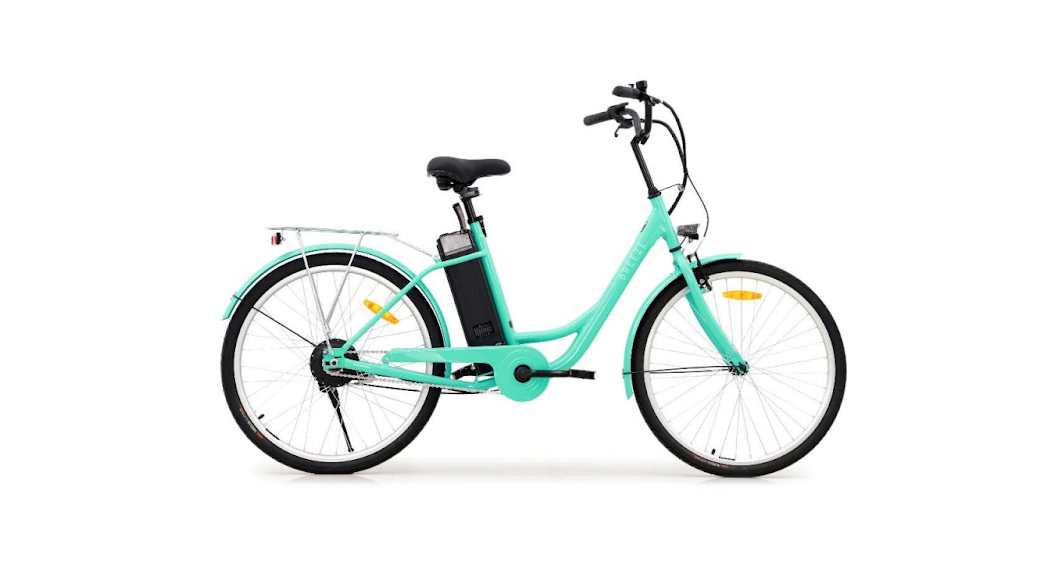
USER GUDE
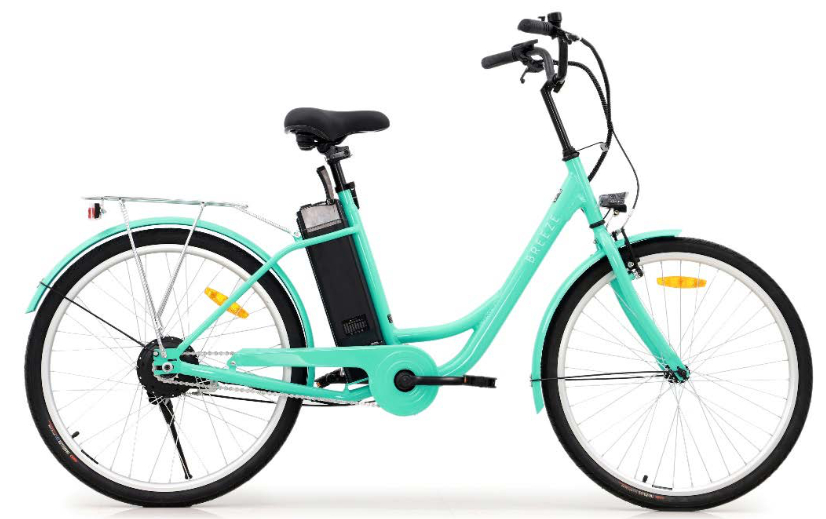
26″ CITY BREEZE LADIES ELECTRIC BIKEFS26LDEBKSA
SAFETY & WARNINGS
Electric Assisted Bike RegulationsThe EN 15194 EU standard or EPAC (Electric Power Assisted Cycle) conforms to the following characteristics for electric power-assisted bikes:
- Motor assistance only starts when the cyclist pedals.
- The assistance cuts out as soon as the cyclist stops pedaling.
- The assistance cuts out as soon as the speed exceeds 25km/h.Adherence to this standard enables the use of electric bikes in the same conditions as any other bicycle, particularly on bicycle paths and bicycle-specific lanes.
Recommendation before First Ride
- Before first use, double-check the function of all the parts of your electric bike. If you have any doubts or if you detect a problem, contact Kogan.com for further support assistance.
- If you lend your bicycle to a third party, give them this user guide with the bicycle and ensure that they read it before the first ride.
- Respect local, state, and national road traffic regulations.
- For your safety, it is highly recommended that you wear a certified helmet. Ensure you are always following local helmet laws while operating the bicycle.
- When used during heavy rain, snow, in slippery conditions, or in the case of low visibility, be careful and adjust your speed.
- At night, ensure the bicycle headlights are activated while operating.
- Trying to repair anything that involves removing technical or electrical components is strongly advised against. If maintenance or repair is necessary, contactKogan.com for support assistance.
- The manufacturer declines any responsibility due to overloading or items that are not correctly attached to the baggage rack.
- Using high pressured water jets to clean the bike is strongly advised against.
- Check the battery level before each use. Ensure the battery is fully charged prior to first use.
- In order to extend battery performance and lifespan, do not commence operation when the battery is only half-charged.
- The battery life will vary depending on where you ride it (inclines will reduce power rapidly) and how you ride (assistance mode chosen). The greater the assistance used, the more you’ll use the battery and the shorter it will last. This bike is fitted with gears; remember to use them accordingly relative to riding conditions in order to extend battery life. The amount of weight carried will also have an impact on battery lifespan. Extreme low temperatures can also impact battery lifespan.
- It is recommended that you charge the battery at least every 2 months when the bike is not used; during winter, for example.
- Store the battery in a dry place after having completely recharged it. Avoid extreme temperatures (both low and high) as they can damage the battery. Optimaloperating range: -10°C to 35°C.
Cleaning and Maintenance
- Use a damp cloth with neutral detergent to clean the bike frame. Do not use any detergents or cleaning liquids liable to deteriorate the frame or components.
- Use a dedicated bicycle cleaner or hot soapy water to clean your bike and its components, such as wheels, hubs, rims, brakes, and pedals. Rinse well with cleanwater before use.
- Do not use high-pressure water jets to clean your bike, especially on the electrical components (such as the battery), as this may result in short-circuiting or system malfunctions.
- All the components and parts of your bicycle are subject to normal wear and fatigue.
- Keep a close eye on any change in the shape or color of a component or traces of oxidation (rust) on your bicycle. If this occurs, do not use the product until the component has been replaced.
Warning
- Do not ride after consuming alcohol or drugs (prescribed or not), or while under the affects of medication which might make you drowsy.
- Do not ride while you feel unwell, nor after consuming alcohol or drugs. This product has the potential to endanger yourself and others if not operated responsibly.
- Pedal-assisted bicycles are not designed for 2 or more people. Do not ride carry passengers as these bicycles are not designed to carry the additional load of a second rider.
- Do not put batteries in normal waste bins. Dispose of used batteries in a certified recycling facility.
- Do not over-lubricate; if oil contacts the wheel rim, brake pads or brake disks, this will result in loss of braking performance and an increase in stopping distances. This could potentially cause loss of control, accidents, and injury.
TransportIt is highly recommended that you do not overload your pedal-assisted bicycle, as this may damage the electrical components or cause malfunctions, such as overheating of the battery or the motor. Do not store the battery in excessively hot or cold places.
- Maximum transport weight on the bicycle must not exceed 75kg.
- Regularly check battery brackets and mountings.
- Always wear a helmet when riding your pedal-assisted bicycle.
- If a rack is not already fitted to your bicycle, please do not attempt to fit one yourself.
- Do not carry anything on the rack that might hide lights or reflectors.
OVERVIEW
Basic overview assembly

ASSEMBLY
Stem & Handlebar AssemblyWARNING: To prevent steering system damage and possible loss of control, the stem must be inserted enough so that the minimuminsertion marks are completely covered (see Figure 1).
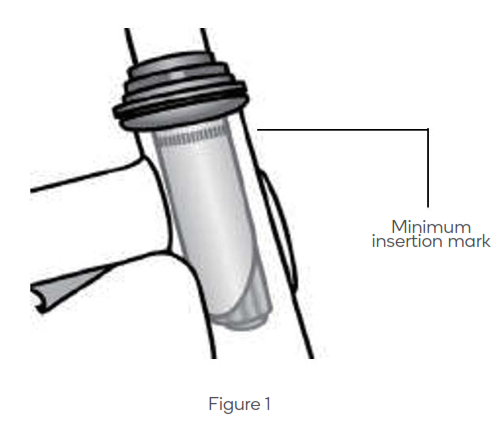
Remove the plastic shipping cap from the bottom of the stem; insert the stem and handlebar assembly into the fork, making sure the stem wedge is loose.
Ensure the cables are not tangled and track smoothly on either side of the stem. The stem should be pointing towards the front of the bike, aligned with the front tire.
Tighten the stem bolt with an Allen wrench (see Figure 2)
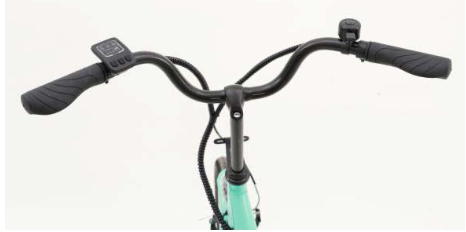
Figure 2
Wheel Mounting
- Make sure the brakes are loose enough to allow the wheel to pass through the brake pads easily. If not already loose, disconnect the front brake by detaching the cable guide from the carrier.
- Place wheel into fork dropouts (Figure 3a)
- Install retaining washers with raised lip pointed towards the fork and insert into the small hole of the fork blade.
- Install axle nut and securely tighten (Figures 3a and 3b).
- Make sure the wheel is centered between the fork blades. Spin the wheel to make sure that it is centered and clears the brake shoes. Tighten the brakes if necessary.
- If the wheel is out of alignment you will need to true the wheel; when spinning the wheel and notice the gaps between the brake pads are not consistently the same, the wheel needs truing. See a qualified bike technician to true wheels.

Brake Adjustment
- After installing the front wheel, re-connect the front brake by squeezing the arms together and sliding the cable guide back into the carrier. The wheel should not rub on the brake pads.
- Next, squeeze the brake lever and take note of the brake pads contacting the side of the wheel. The pads should contact the rim on both sides at the same time.
- Finally, hold the brake lever firm and try to move the bike forward. The brake should hold well enough to keep the wheel from moving.
- Repeat these steps for the rear wheel.
Seat Assembly
- Insert the seat stem into the frame (see Figure 5).
- Pull the quick-release lever free and insert the seat-post to the minimal insertion marker indicated on the seat post.
- Insert at least to the minimal indication on the seat stem using rotary movements. You can use grease to help with assembly.
- Tighten the quick-release clamp and then fold the lever to the closed position. Minimal torque specifications are 19.5Nm.
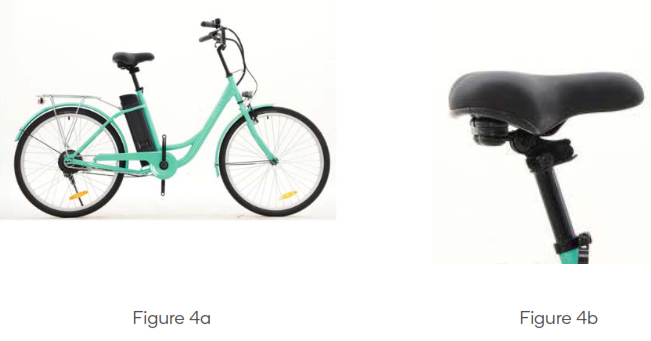 Attaching the pedals
Attaching the pedals
Install the pedal marked “L” on the left crank and tighten, then install the pedal marked “R” on the right crank and tighten. Note: Damage will occur if pedals are not correctly and firmly attached.

BEFORE FIRST USE
Recommendations and Component Control before UseBefore using your bicycle for the first time, you must check that all adjustments have been correctly made.
- Check that the front and rear brakes work, check brake pads for wear.
- Check the cables and sheaths and that the hydraulic system functions correctly.
Wheels and Tires
- Check tires are inflated to the pressure indicated (either in Bar or Psi) on the tire sidewall.
- Check that the tires are in good condition and are free from cuts or bulges.
- Check the state of wheel rims and ensure that spokes are correctly tightened.
- Check that the wheels are correctly fitted to the bicycle, either by a quick-release system or nuts.WARNING: If a wheel rim or spokes are damaged, immediately replace the wheel.
Steering
- Check that the handlebar and stem are correctly tightened and that they are in line with the wheel and the fork.
- Check that the steering clamp is correctly tightened and adjusted in the right direction.
Frame and Fork
- Check that the frame shows no signs of fatigue or damage and that the fork works correctly.
Chain
- Make sure that the chain is at the correct tension.
- Make sure that it is clean, rust-free, and properly oiled. Use adapted lubrication for use in extreme weather conditions.
Seat and Seat-post
- Make sure that seat and seat-post are correctly tightened and positioned.
Bearings
- Check that all bearings are properly adjusted, and apply lubricant if needed.
- Ensure they are not too loose, and that they have not seized up.
- Check steering bearings, wheel bearings, pedal bearings and bottom bracket bearings.
Crankset and Pedals
- Make sure that the pedals are correctly tightened and that the teeth of the crank set do not show any unusual wear.
Accessories
- Check front and rear lights; also check that bell is working.
- Ensure that the reflectors are not hidden or obstructed.
- Check that the battery is correctly fitted and secured.
- Make sure that the rider wears a helmet.
Torque Specifications
- The handlebar is fitted to a stem. The height of some stems can be adjusted. If you must dismantle the handlebar or turn it to transport the bicycle, please make sure that you correctly reassemble and center the handlebars; check the position by placing your hands on the grips to find the best position. Make sure all bolts are correctly tightened. Once the handlebar and stem are assembled, make sure that the brake and derailleur sheaths are free. Recommended torque specification: 1314Nm. Recommended torque specification for the rear rack is 16Nm.
- You can adjust the angle of the stem by adjusting the bolt located under the stem using an Allen key. Once you have found the desired angle, tighten the stem to the headset. Recommended torque specifications are 18-20Nm.
- If you remove nut fitted wheels, make sure that when you replace them you respect a minimal recommended torque specification of 30Nm for the rear wheel and 25Nm for the front wheel.
OPERATION
Presentation and Electrical Start-Up

ELECTRONIC PAD LAYOUT– (A): Less assistanceM (B): Mode On/Off+ (C): More assistance
Starting System
- Press the Mode On/Off button (B) for 5 seconds in order to start the system or shut the system off.
- Hold + Button (C) for 3 seconds to turn on the light, hold again for another 3 seconds to turn off the light.
- When the vehicle is stationary, long press – Button (A) to enter the 6KM/h walk mode. Walk mode is in effect while the button is held. Release the button to exit.
LED Screen Setup and Assistance Level
Battery volume: There is five-segment battery power indicator. When the battery voltage is high, the five red LED lights are all on. When the battery is under voltage, the leftmost red LED flashes, indicating that it needs to be charged immediately.
Assistant gearing adjusts:
- To t a l l y assist levels: 3
- Default setting is 0
- Short-press + Button (C) to assist +1
- Short-press – Button (A) to assist -1
Battery Mounting and LockingUse the battery key supplied in the carton to take out the battery. Use the battery key to fix the battery. Press the power display button on the battery to check the battery volume.
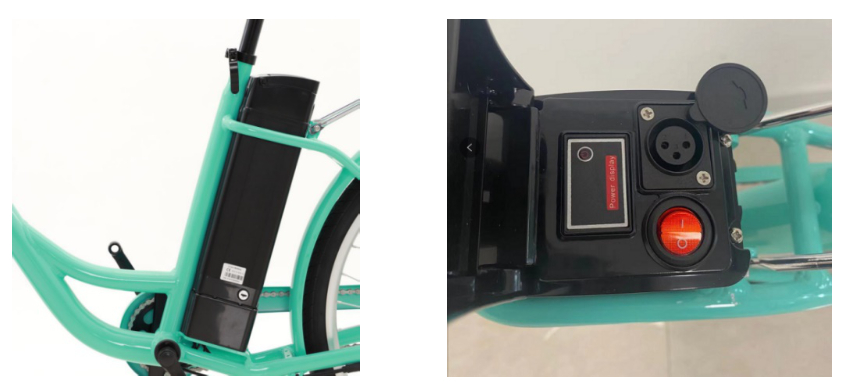 Battery ChargingWith the supplied charger, you can charge the battery directly whilst it is on the bike or use the key to take out the battery; the connection plug is located at the top of the battery. Make sure that the charge plug is securely in place at all times in order to prevent humidity from entering.
Battery ChargingWith the supplied charger, you can charge the battery directly whilst it is on the bike or use the key to take out the battery; the connection plug is located at the top of the battery. Make sure that the charge plug is securely in place at all times in order to prevent humidity from entering.
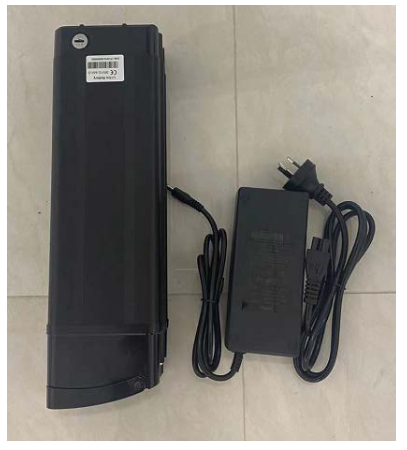
CLEANING & CARE
Care and LubricationOnly use specific bicycle lubricants.
| Pedals | A few drops every 6 months on the axle. |
| Chain | Spray the whole surface every 6 months. |
| Bottom bracket | Every 6 months, please check with your authorized dealer. |
| Motor | Every year, please check with your authorized dealer. |
Maintenance and Advice
- Never modify your bicycle with non-certified parts.
- Never ride in deep water.
- Do not use for jumps or stunts (apart from downhill or endure bicycles).
- Avoid long distance rides when it is raining.
- Keep both hands on the handlebar.
- Avoid sudden braking.
- Be careful when riding in pools of water.
- Thoroughly check the bicycle before each ride.
- Avoid leaving your bicycle in heavy rain or snow. If you do so, wipe dry.
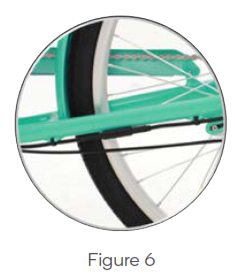
It is highly recommended to have your bike serviced by an authorized dealer at least once a year or every 1000km. Check your brake cables, sheaths and brake pads. Lubricate all transmission components, chain and derailleur with a suitable product. If the rear tire has a puncture, remember that if you must remove it, it is attached to the motor, so make sure to disconnect the cable. (Figure 6)
When you reach 5000km or 100 charge cycles, a service alert will show for 4 seconds when you start the system, indicating that it is time to plan a service.
SPECIFICATIONS
| Power supply | 36V |
| Instrument rated working current | 10mA |
| Maximum working current of the | 30mA |
| instrument | <1uA |
| Shutdown leakage current | Max 500mA |
| Supply the working current of the controller Using temperature | -20~60°C |
| Storage temperature | -30~70°C |
NOTES
Need more information?We hope that this user guide has given you the assistance needed for a simple setup.For the most up-to-date guide for your product, as well as any additional assistance you may require, head online to help.kogan.com.
[xyz-ips snippet=”download-snippet”]

